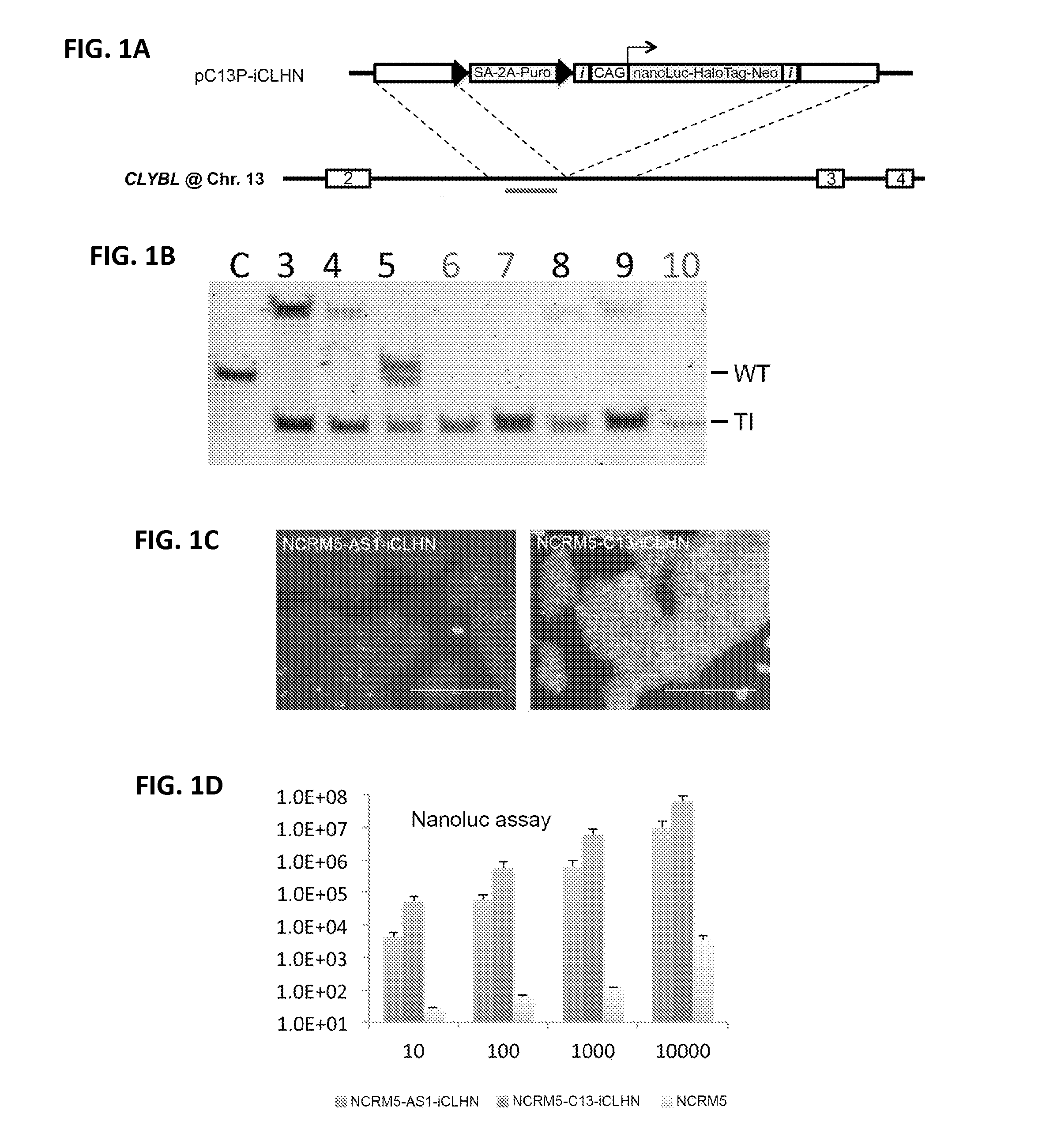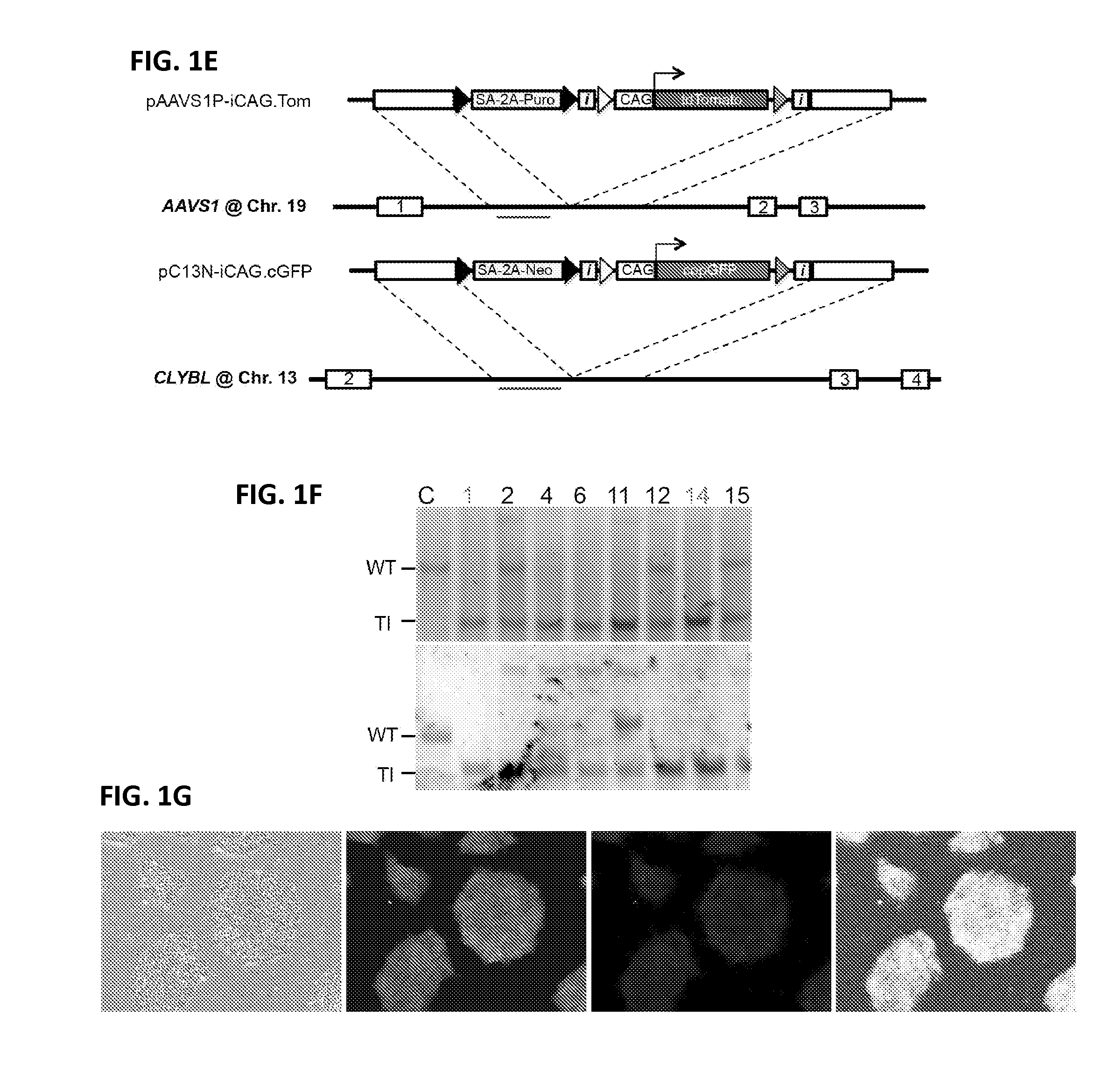Engineering neural stem cells using homologous recombination
a neural stem cell and homologous recombination technology, applied in the field of neural stem cells, can solve the problems of limited treatment options for these disorders, sensory, motor and cognitive impairments, etc., and achieve the effect of facilitating homologous recombination and facilitating homologous recombination
- Summary
- Abstract
- Description
- Claims
- Application Information
AI Technical Summary
Benefits of technology
Problems solved by technology
Method used
Image
Examples
example 1
Multiplexed Reporter Knock-in at Safe-Harbor Loci in Human iPSCs and Neural Stem Cells
[0646]It was reasoned that gene targeting at safe harbors which are usually actively transcribed region should provide a large transgene knock-in and sustained transgene expression. TALENs have been known to have both high activity and specificity. A TALEN mammalian expression vector was designed based on original Golden Gate TALEN (Cermak et al., Nucleic Acids Res 39, e82 (2011)). RVDs and truncated N- / C-terminus from TALE13 (Miller et al., Nat Biotechnol 29, 143-148 (2011)) because Golden Gate assembly method provided nearly 100% successful rate for quick and easy manual TALEN construction and truncated TALE terminus showed higher activity than wild-type (Bedell, Nature 491, 114-118 (2012)). Using an AAVS1 target sequence, a TALEN expression vector—pZT—was tested by comparing pZT-AAVS1 TALENs with pGoldy-AAVS1 TALENs, which have different truncated N- / C-terminus (Bedell et al., supra) and AAVS1-C...
example 2
Exemplary Protocol
[0656]The AAVS1 safe-harbor locus within the PPP1R12C gene has robust (Lombardo et al., Nat Methods. 2011 Aug. 21; 8(10):861-9. doi: 10.1038 / nmeth.1674) and long-term (DeKelver et al., Genome Res. 2010; 20:1133-1142) expression of targeted transgenes without perturbation of neighboring gene transcription (Lombardo et al., op cit.) and apparent dispensability of the PPP1R12C gene in hESCs and iPSCs (DeKelver et al., op cit.)
[0657]By utilizing the improved genome-editing ability of TALENs NSCs were directly targeted at the AAVS1 safe harbor locus to constitutively express a fluorescent reporter and a puromycin resistance gene. By pooling the surviving targeted clones after puromycin selection, a highly pure engineered NSC population was obtained. Targeted NSCs maintained the capacity to self-renew and differentiate to neurons and astrocytes. Engineering at the CYBL locus could also be used. See FIGS. 15 and 16.
2 Materials2.1 Cells1.Human neural stem cells (NSCs) such...
PUM
| Property | Measurement | Unit |
|---|---|---|
| Ratio | aaaaa | aaaaa |
Abstract
Description
Claims
Application Information
 Login to View More
Login to View More - R&D
- Intellectual Property
- Life Sciences
- Materials
- Tech Scout
- Unparalleled Data Quality
- Higher Quality Content
- 60% Fewer Hallucinations
Browse by: Latest US Patents, China's latest patents, Technical Efficacy Thesaurus, Application Domain, Technology Topic, Popular Technical Reports.
© 2025 PatSnap. All rights reserved.Legal|Privacy policy|Modern Slavery Act Transparency Statement|Sitemap|About US| Contact US: help@patsnap.com



